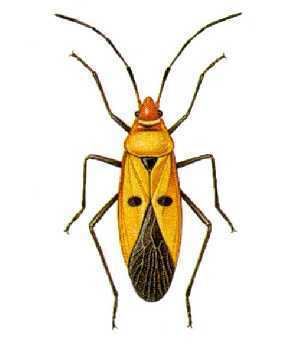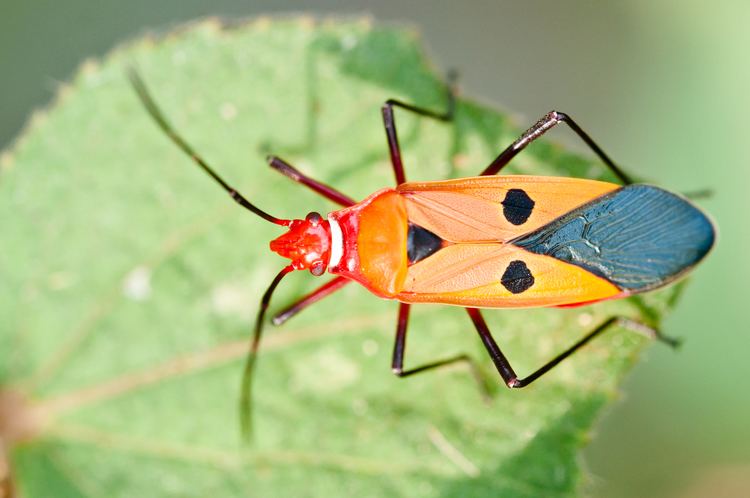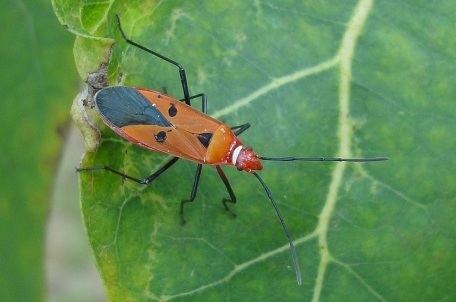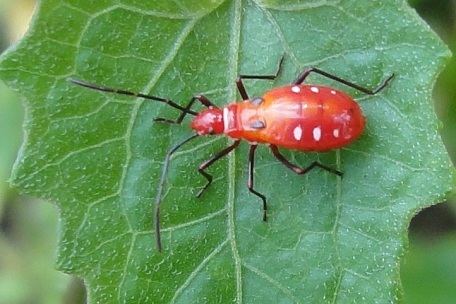Suborder Heteroptera Rank Species | Order True bugs | |
 | ||
Similar Dysdercus, True bugs, Pyrrhocoridae, Dysdercus koenigii, Rhynocoris | ||
Red cotton bug dysdercus cingulatus move it s bowel
Dysdercus cingulatus is a species of true bug in the family Pyrrhocoridae, commonly known as the red cotton stainer. It is a serious pest of cotton crops, the adults and older nymphs feeding on the emerging bolls and the cotton seeds as they mature, transmitting cotton staining fungi as they do so.
Contents
- Red cotton bug dysdercus cingulatus move it s bowel
- Dysdercus cingulatus mating behaviour desh deepak chaudhary
- Description
- Distribution
- Host plants
- Biology
- References

Dysdercus cingulatus mating behaviour desh deepak chaudhary
Description

Dysdercus cingulatus grows to a length of 12 to 18 mm (0.47 to 0.71 in). It is mainly red but has a white collar and three black spots. It is closely related and very similar to Dysdercus koenigii but D. cingulatus is slightly larger and the femora have varying amounts of black while D. koenigii has completely red femora.
Distribution

Dysdercus cingulatus occurs in Sri Lanka, northeastern India, Bangladesh, Thailand, the Philippines, Sumatra, Borneo, Papua New Guinea and northern Australia.
Host plants

As well as cotton (Gossypium), Dysdercus cingulatus feeds on a number of other crop plants including okra (Abelmoschus esculentus), muskmallow (Abelmoschus moschatus), hibiscus, white jute (Corchorus capsularis), citrus and maize (Zea mays). It also attacks trees including silk cotton tree (Bombax ceiba), kapok (Ceiba pentandra), teak (Tectona grandis) and the portia tree (Thespesia populnea).
Biology
Like other true bugs, Dysdercus cingulatus sucks fluids from its host plants. The only part of the cotton plant affected by this pest is the flower and the seed capsule or boll. As this develops, the insect thrusts its rostrum between the carpels and sucks fluids from the still soft seeds inside. Micro-organisms are admitted in the process and may make the boll contents rot or the lint become discoloured. Meanwhile, the seeds wither, the fibres may fail to expand and the boll may abort. When the seeds of a host plant ripen and it becomes unsuitable, the adult insects migrate to new host plants of the same or different species. While away from their hosts, they feed on nectar and fruit of non-host plants, and can survive for several days without food. They seem fond of citrus fruits, but this may merely be because there are often citrus plantations in close proximity to cotton fields.
